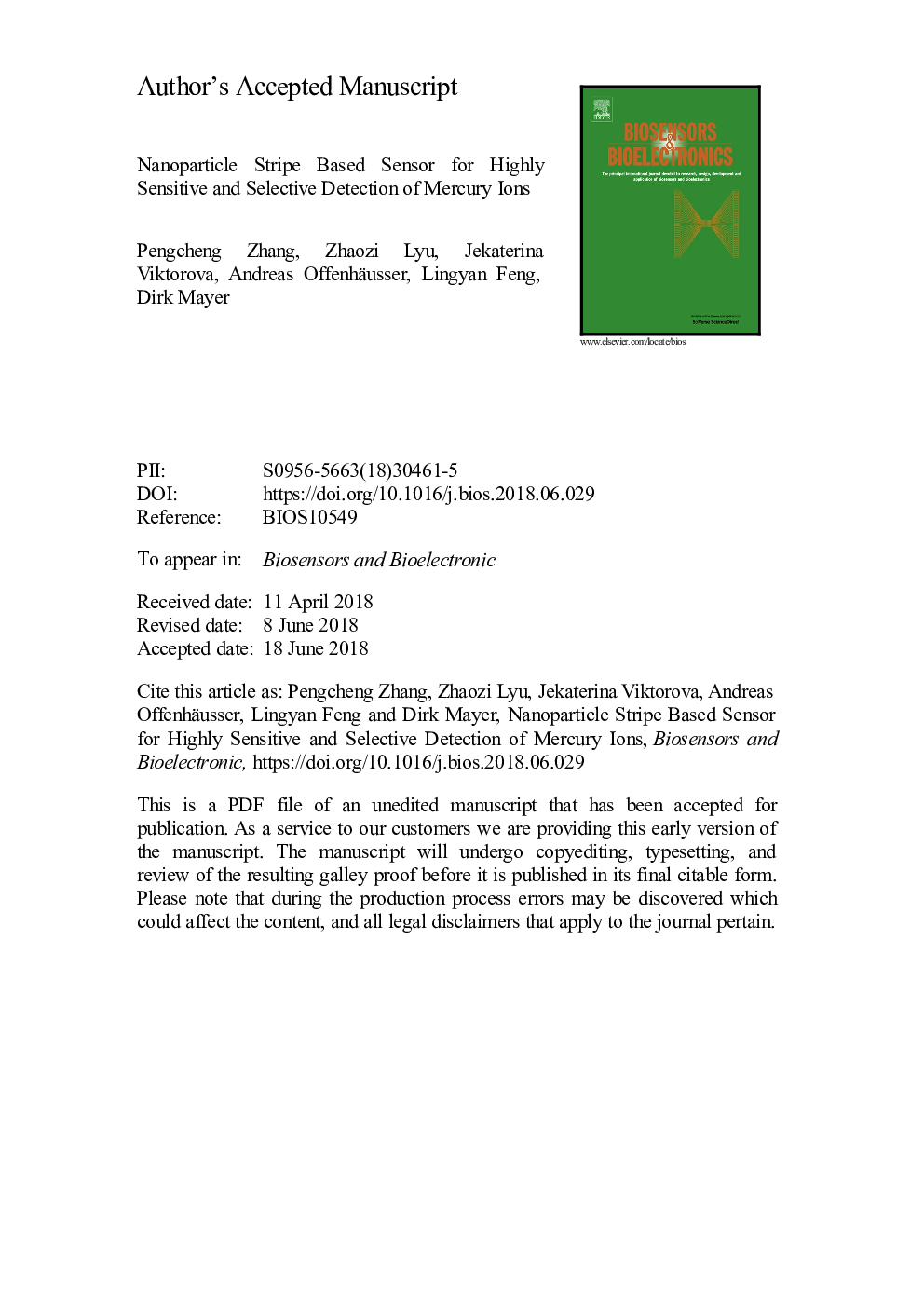| Article ID | Journal | Published Year | Pages | File Type |
|---|---|---|---|---|
| 7229066 | Biosensors and Bioelectronics | 2018 | 21 Pages |
Abstract
Mercury and its compounds are emitted during industrial processes and are extremely harmful for eco systems and human health. Therefore, the detection of mercury ions (Hg2+) in our living and working environment is of great importance for the society and especially for the health of human beings. Here we demonstrate a proof of concept nanoparticle stripe sensor for highly sensitive and selective detection of Hg2+. This sensor is based on the changes of the charge transport between the neighboring nanoparticles in the nanoparticle stripe. The addition of Hg2+ induces a chelation between Hg2+ and carboxylic groups on the surface modification molecules and thus facilitates the charge transport, causing an increase of conductivity in the nanoparticle stripe. These nanoparticle stripes with a few layers in height and several micrometers in width possess large surface area, which increases their exposure to ions and improves the ability to detect Hg2+ at low concentrations. Besides, we studied the effect of molecular length on the sensitivity of the sensor. It is shown that the length of surface modification molecules is positively correlated with the sensitivity of the sensor. The fabricated devices exhibit a detection limit as low as 0.1â¯nM and a specific response towards Hg2+ ions.
Related Topics
Physical Sciences and Engineering
Chemistry
Analytical Chemistry
Authors
Pengcheng Zhang, Zhaozi Lyu, Jekaterina Viktorova, Andreas Offenhäusser, Lingyan Feng, Dirk Mayer,
